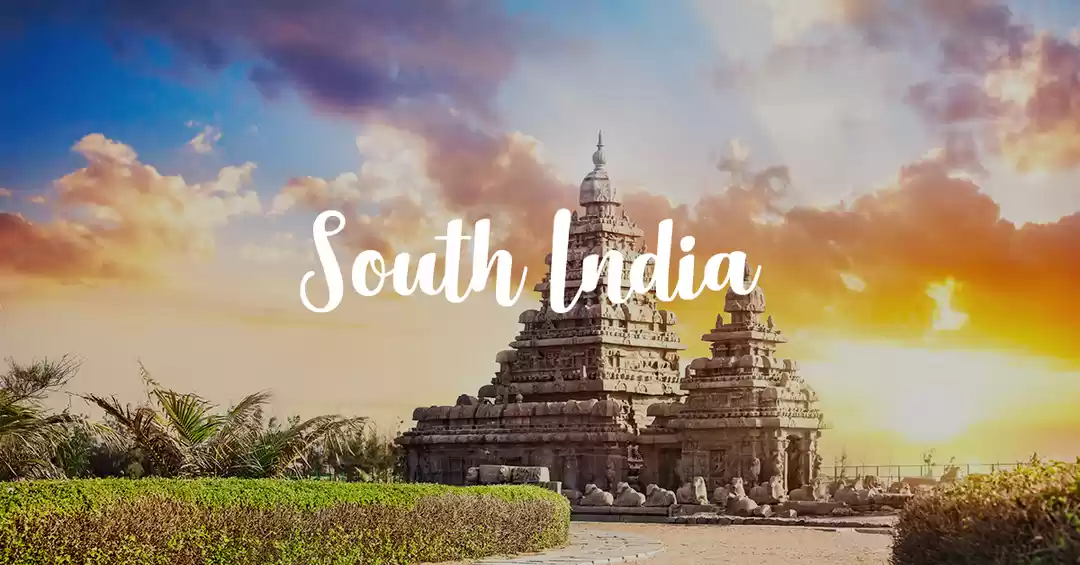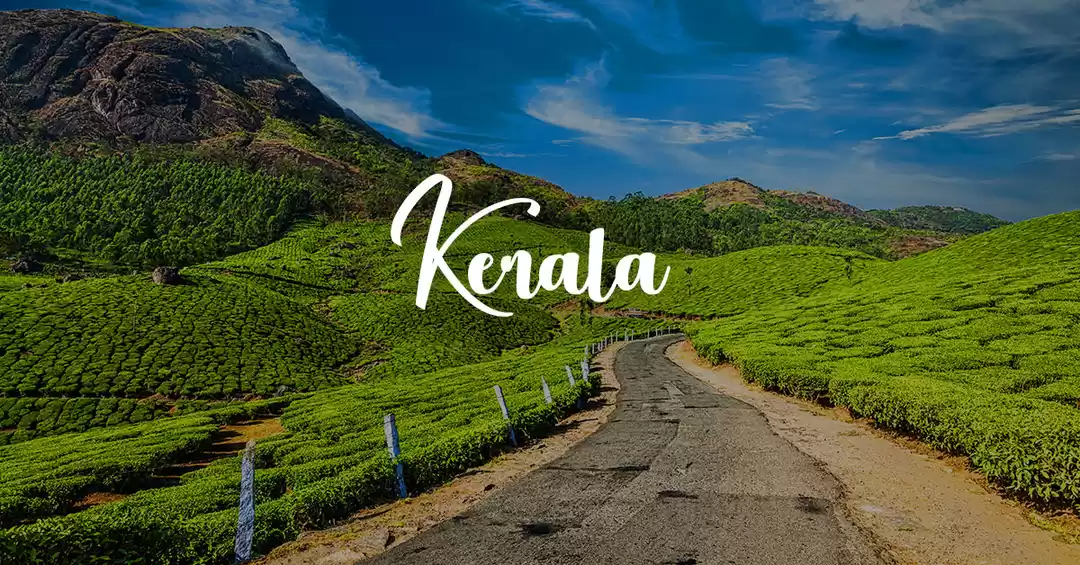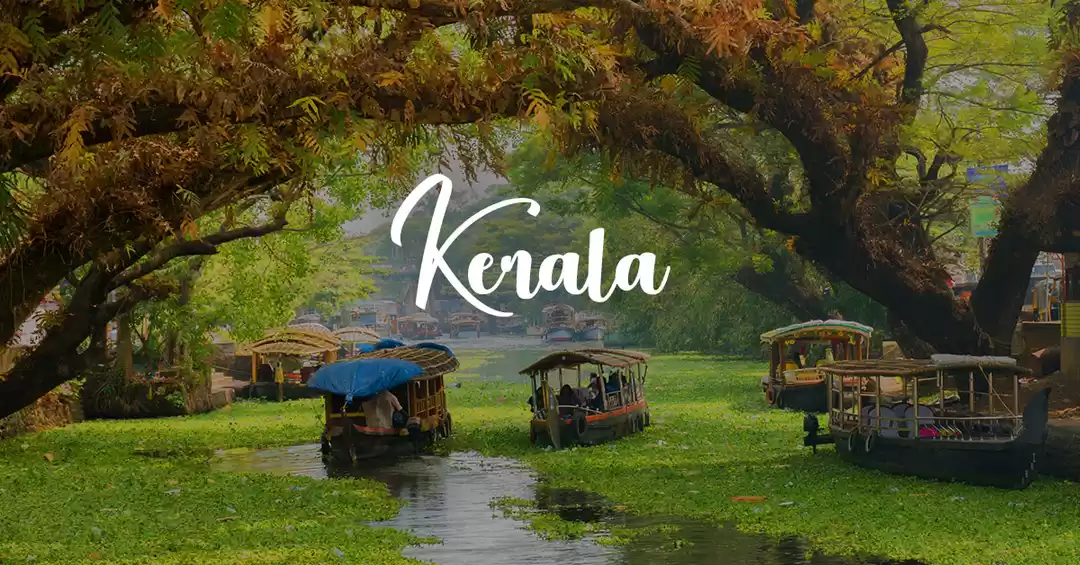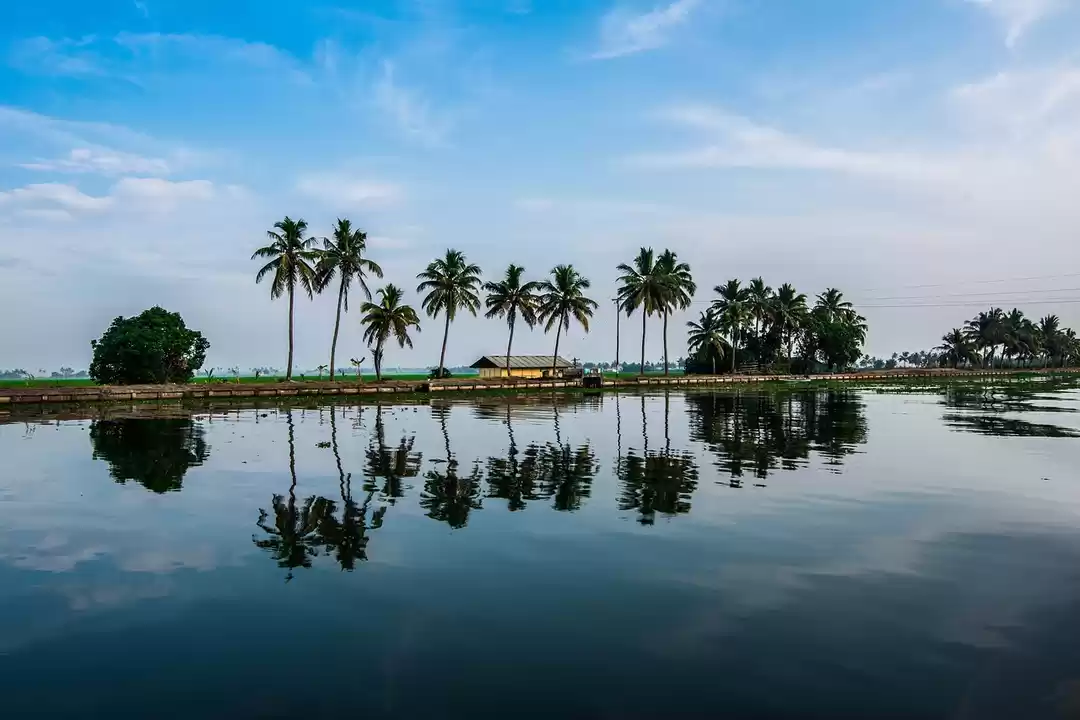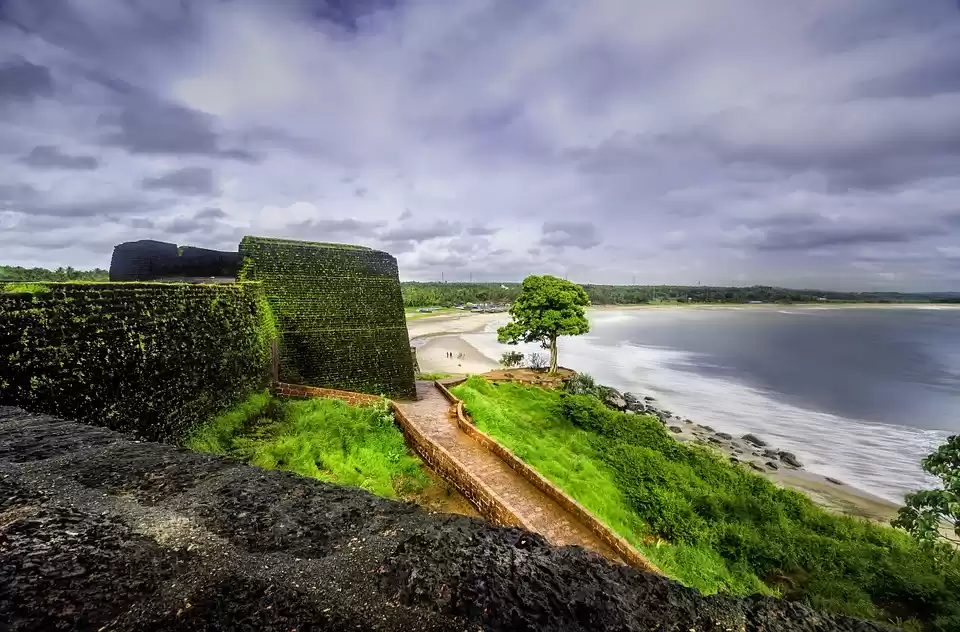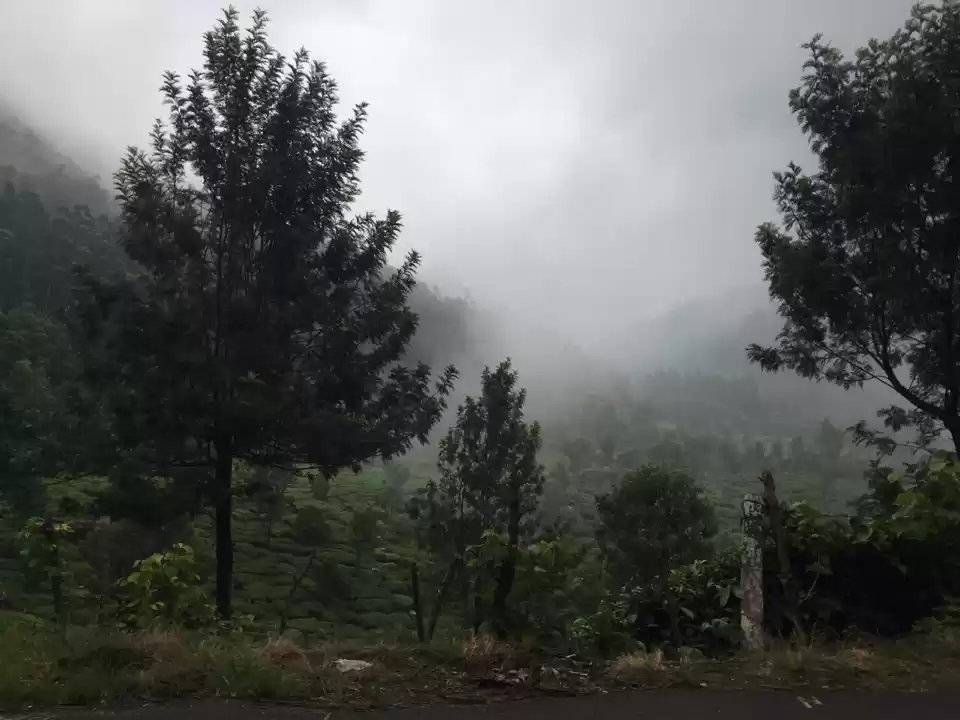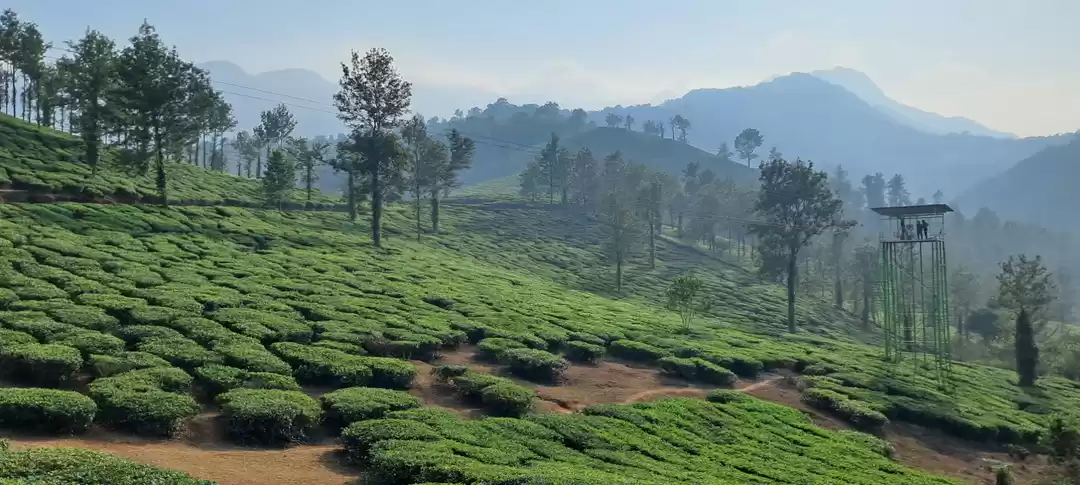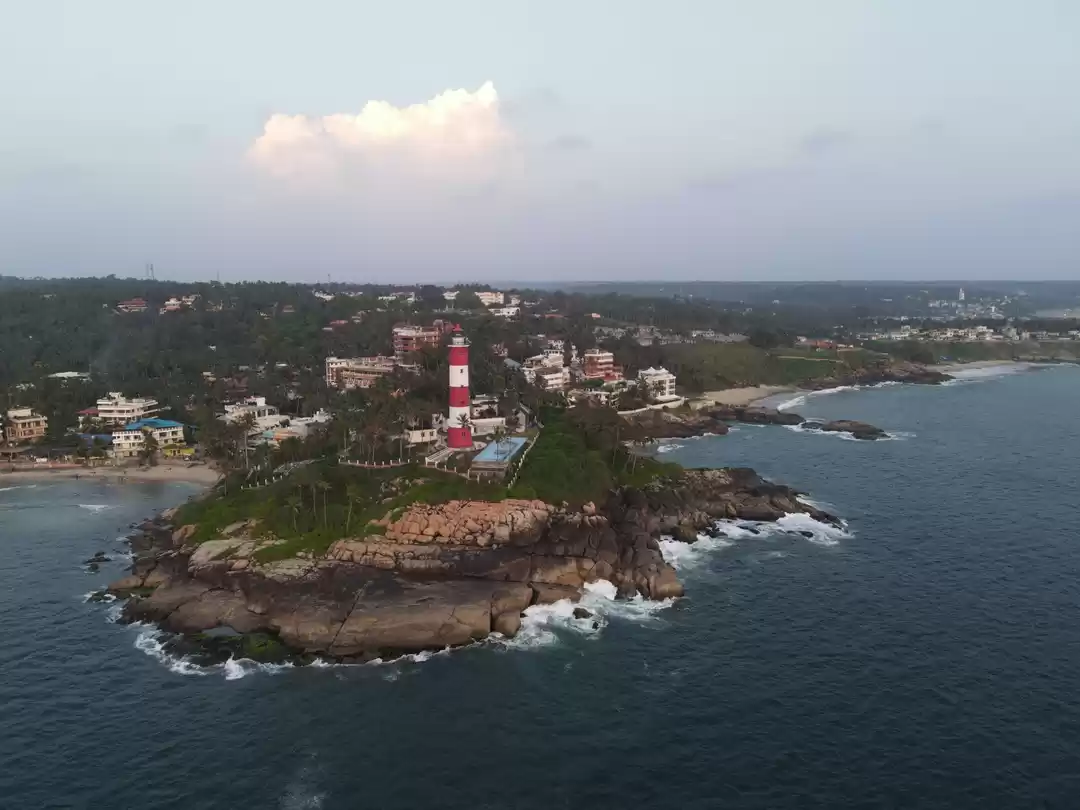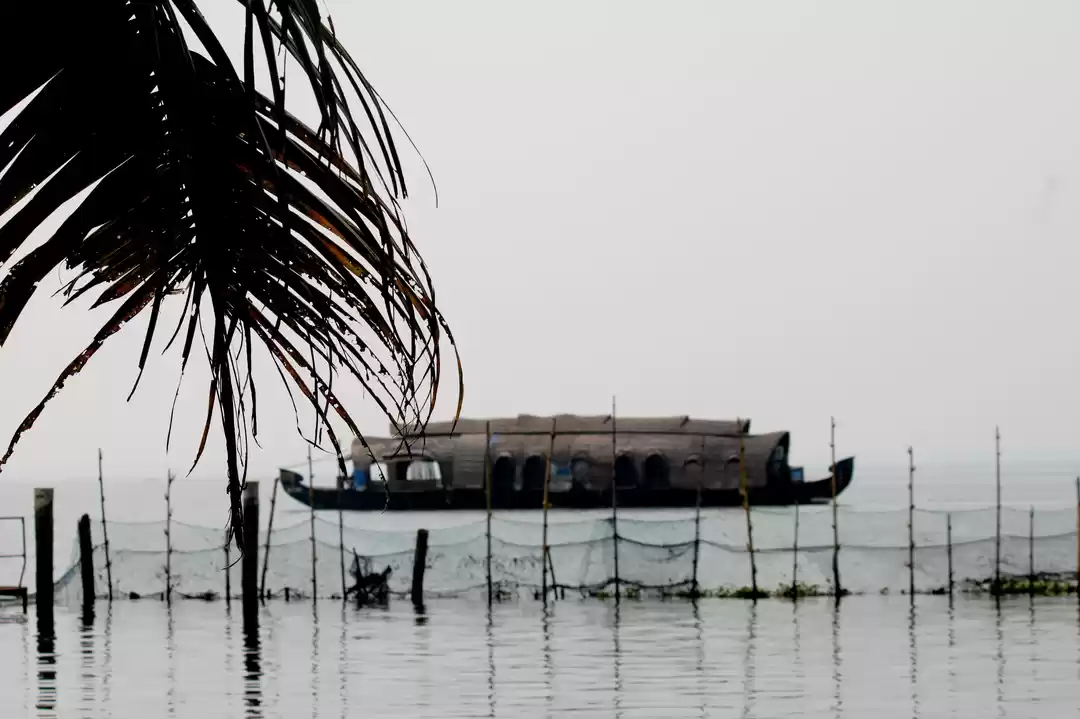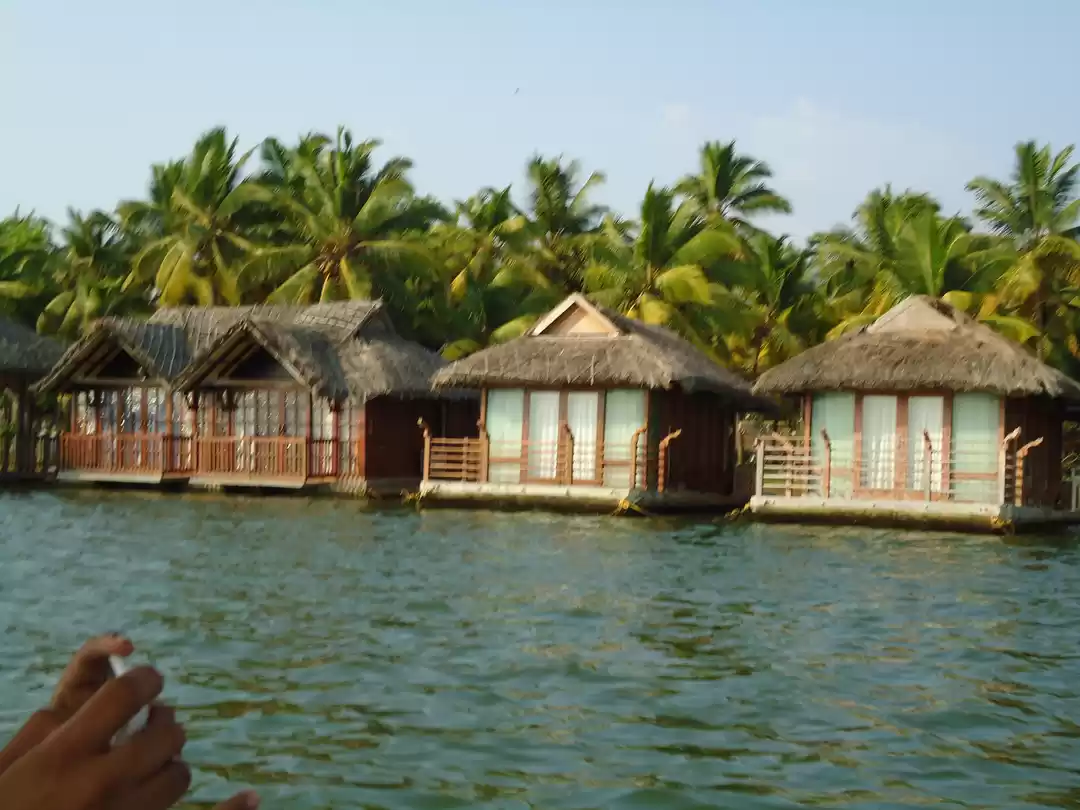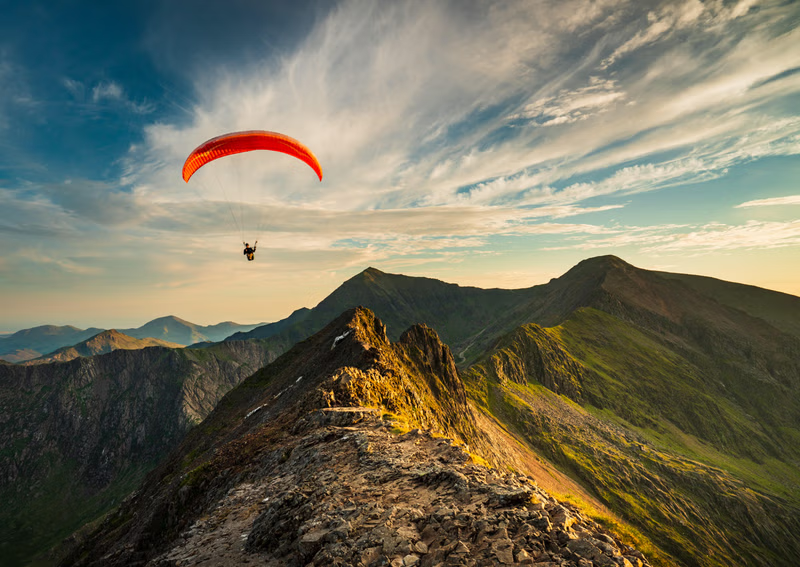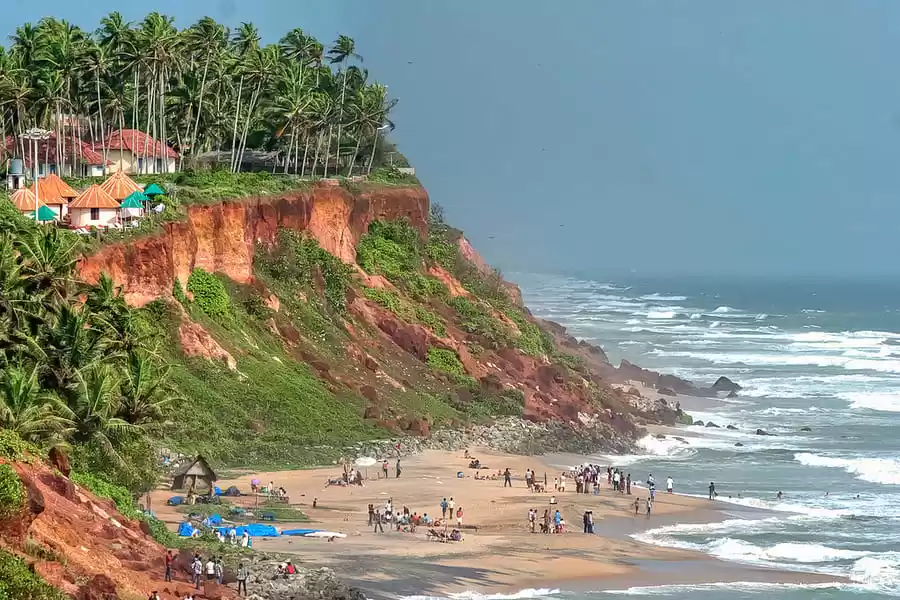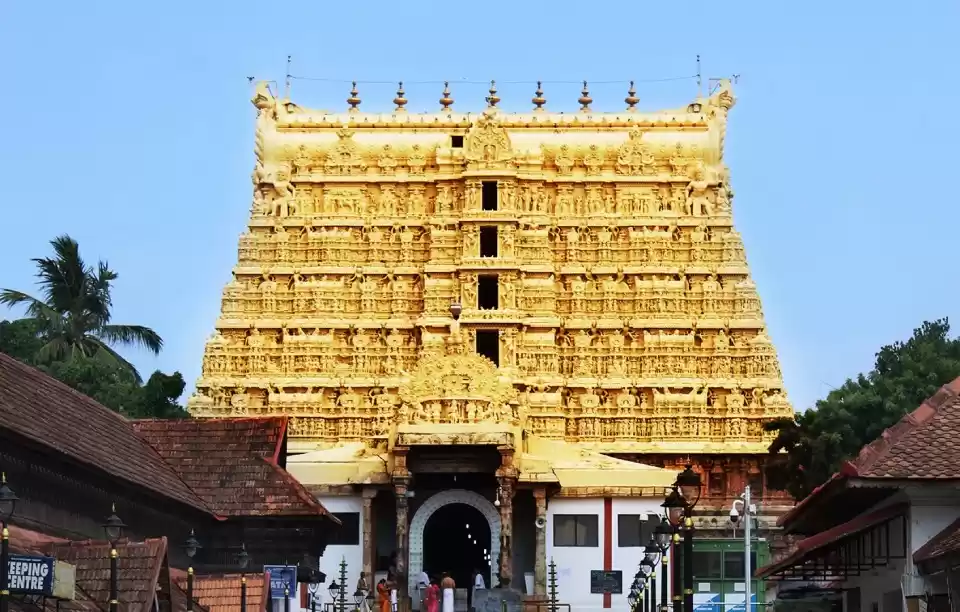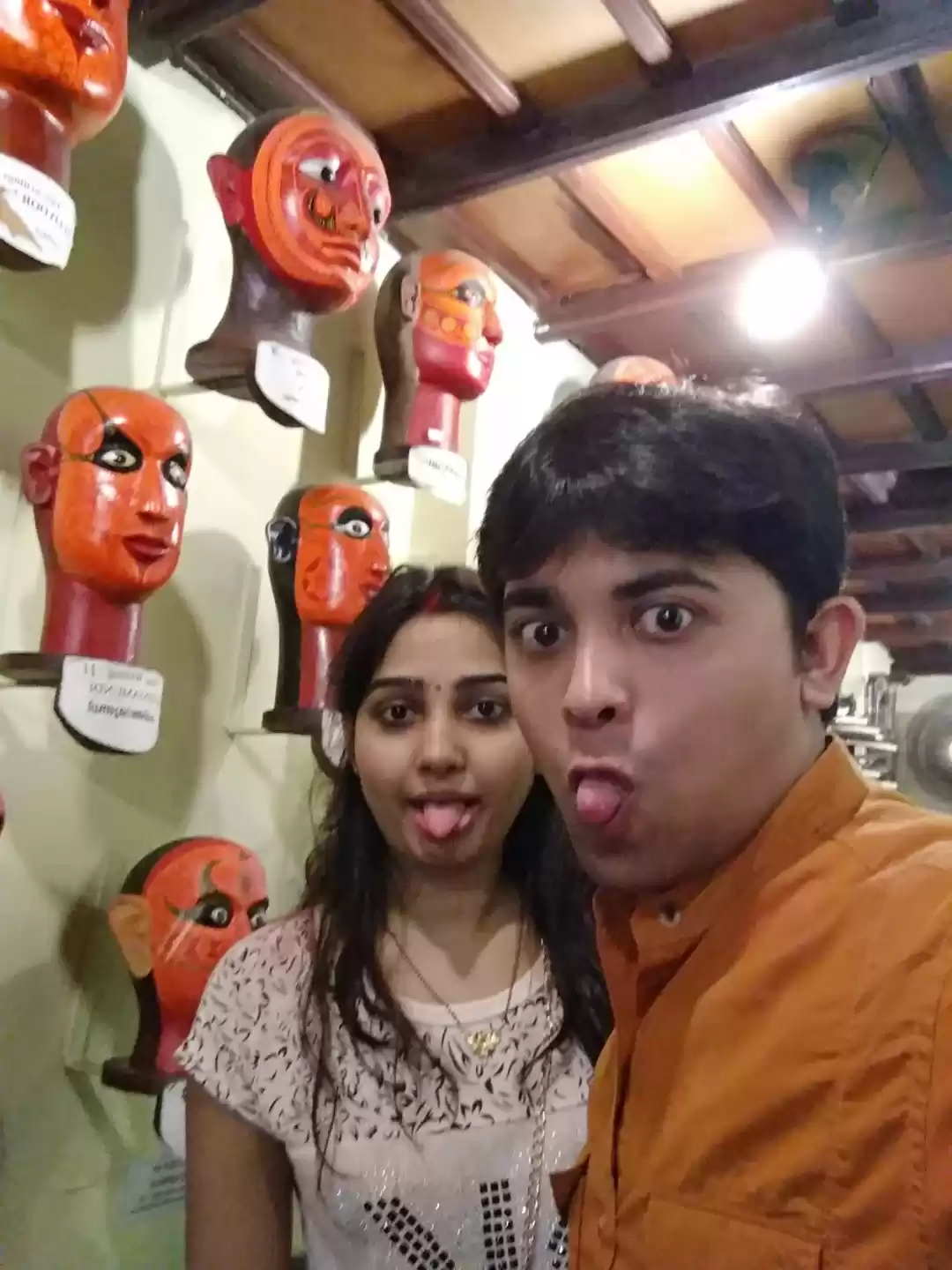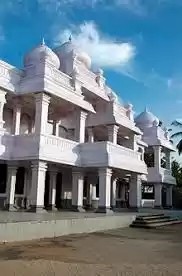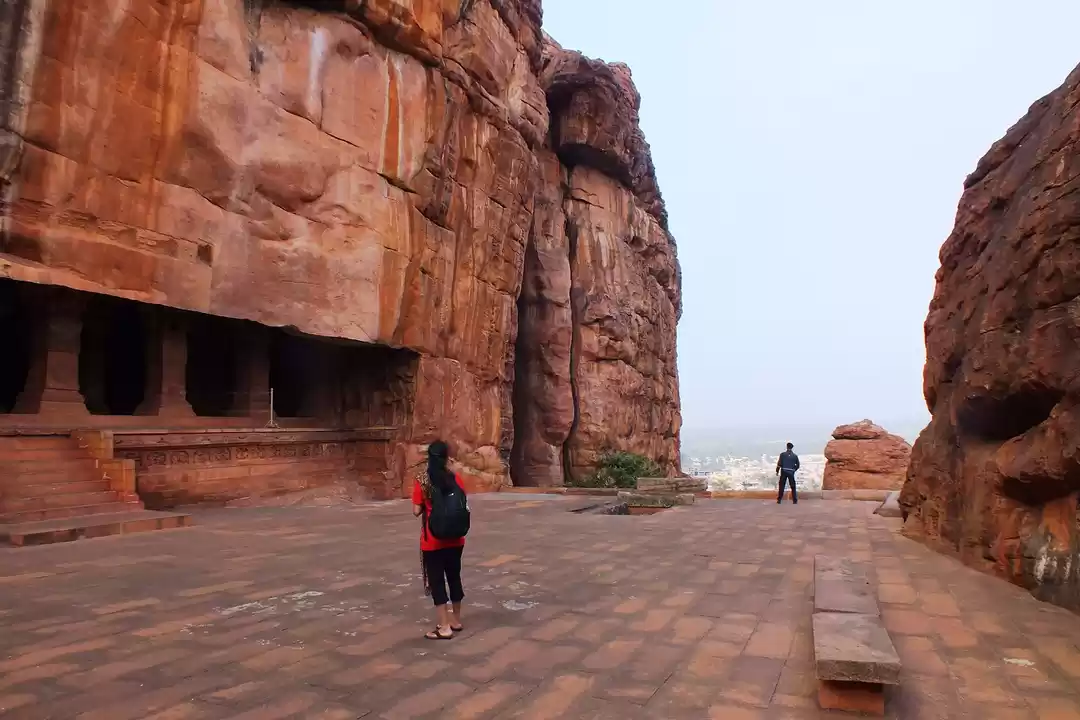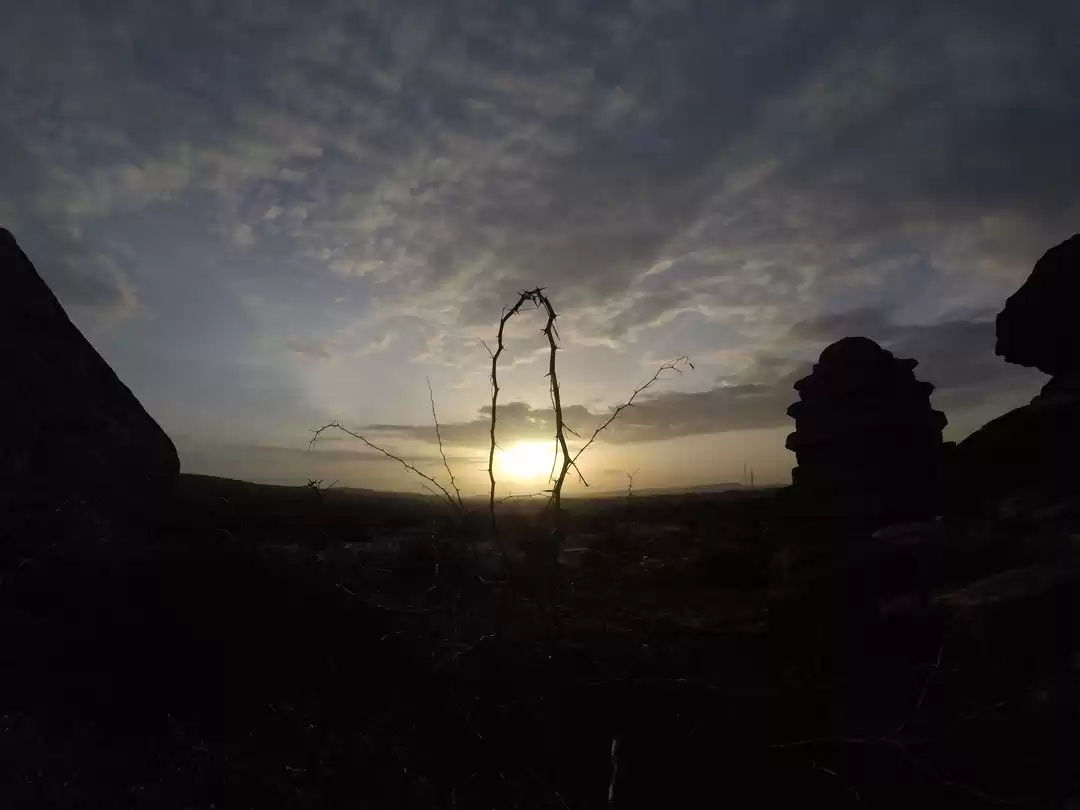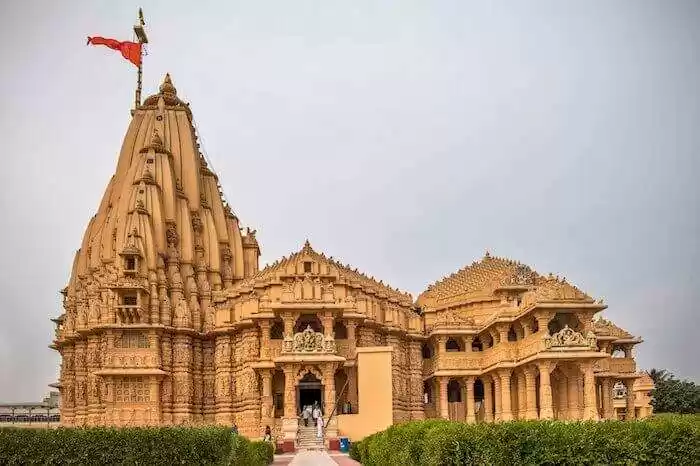I have always heard about the mystical legends of Vilwadrinatha Temple from my childhood. I and my friend Vysakh (he’s my most trusted companion) set out to explore the stories of the temple.
Vilwadrinatha Temple is a Hindu Temple located in Thiruvilwamala, Thrissur district of Kerala. Lord Rama, the seventh avatar of Lord Vishnu, and his brother Lord Lakshmana are the main deities of this temple. This is one of the four major temples in Kerala dedicated to Lord Rama, the other three being Thriprayar, Kadavallur and Thiruvangad temples, and also one of the rarest temples in India itself which houses Lord Lakshmana. The temple is situated on the middle of Thiruvilwamala village, on the top of a hill 100 ft above the sea level. Bharathappuzha, the second largest river in Kerala, flows through the northern side around 3 km away from the temple, and as the temple is situated on the top of a hill, the river can be clearly seen from the temple.

The Legend
Lord Parasurama, the sixth avatar of Lord Vishnu, assassinated all Kshatriya clans 21 times with his axe, as a revenge of killing his father, sage Jamadagni (Jamadagni was killed by the sons of the evil king Kartavirya Arjuna, as a revenge to Parasurama who assassinated their father). But after that, he was very sad for doing such act as a revenge, and thus he gave all the land he acquired to holy Brahmins. But, some of them were against Parasurama as he massacred thousands of Kshatriyas. After that, he made his own land by throwing his axe to the sea. That land came to be known as Kerala, as it was filled with Kera (Coconut trees), Parasurama gave this land to Brahmins, and made 108 Shiva temples, 108 Durga temples and 5 Sastha temples to them for worship. Later, he went to meditation.
But still, he was not happy. One day, while he was meditating, the ghosts of the Kshatriyas assassinated by Parasurama appeared before him and asked him to give salvation. They also told that if they will not get salvation, they will cause huge problems to the people. After that, he began to pray Lord Vishnu. While praying, he heard a message, which stated that Lord Shiva has reached Vilwadri (Sanskritised version of Thiruvilwamala) with his full family and guards and he should reach there immediately. Parasurama immediately proceeded to Vilwadri. Lord Shiva presented him and idol of Lord Vishnu, and told that he worshiped that idol in Kailasa. Parasurama found a very suitable place nearby and consecrated the idol there, in a manner of getting darshan for the ghosts.
Around the same time, a sage named Amalaka, the son of sage Kashyapa, conducted huge penance praising Lord Vishnu on the same spot. It is believed that Amalaka got this name by eating only amla (gooseberry) fruit. When he was doing penance, the devas (gods) believed that he had wish on taking heaven away from them. They sent heavenly damsels and made blasts near him, but he never woke up. When they complained Kashyapa about this incident, he told that his son was not interested in any worldly pleasure. Then, the asuras (demons) had problem. They all came in a row to break Amalaka’s penance. Amalaka opened his eyes. Fire smashed out of them. The asuras all got burnt and together they became a huge rock, called ‘Rakshasappara’. Amalaka continued his penance and Lord Vishnu appeared before him with his consorts Sri and Bhumi, and his bed Ananta as umbrella. He told his wish that the Lord should remain there for the well-being of the worldly people. Thus, the Lord turned himself into a swayambhu idol, with his consorts and Ananta.
After both the idols were consecrated, the power of Lord Vishnu spread throughout the village. Hearing this, the asuras became again furious. They sent one of them to destroy those idols. He went in the form of a holy Brahmin. During those days, Brahmins in the temple were fed twice a day. This asura also joined them. During the daytime, he remained like a normal Brahmin, but during night time, he changed his form. After that, he began to eat the cows donated to the temple and threw their bones northwards. Thus, the place came to be known as ‘moorikkunnu’ (moori means cattle and kunnu means hill in Malayalam). He also ate some sleeping Brahmins. But no one knew the real killer, as there is no any carnivorous creature nearby. People thought it is any ghost who is eating the cows. Finally, the 11th day (Ekadasi) in the dark fortnight of the month of Kumbham (February-March) arrived. The asura considered that time the most suitable to fulfill his task. One midnight, after all poojas were completed and everybody slept, the asura entered the sreekovil by destroying the pillars. At that time, Lord Vishnu appeared from one of the pillar in the form of Narasimha, his fourth avatar, and killed the asura in the same manner he killed Hiranyakashipu. After hearing the thundering sound made by the asura, all people woke up and rushed to see what happened. After seeing the ferocious form of the Lord, many people fainted. Some people prostrated on the ground and chanted the names of the Lord. They did not have the courage to look upon the ferocious form of the Lord. At that time, sage Amalaka came there and chanted the names of the Lord. After that, the Lord came back to his original form, and blessed his devotees. To prevent from further attacks, some power of Lord Shiva was also disposed in the idol, thus a concept of Lord Shankaranarayana also appeared. Even on special days associated with Lord Shiva, like Mahashivaratri, Pradosha vrata and Mondays, many people visit Thiruvilwamala Temple.
Temple Structure
The temple is situated on the exact center of Thiruvilwamala village, situated on the top of a hill 100 ft above the sea level. On every side except the east, there is some population. The main gate to the temple is from the west. There are more than 50 steps to reach the temple. Bharathappuzha, one of the major rivers in Kerala, flows 3 km away from the temple on the north side, and as the temple is situated on the top of a hill, the river can be clearly seen while looking downwards from the temple. On the west and east sides, there are remains of two huge gopurams, which once got destroyed under mysterious circumstances. There are two idols of Garuda, the mount of Lord Vishnu, on both sides of the main gate. There are many trees on the surroundings of the temple, providing fresh air and lush greenery to the atmosphere. Saraswathikund, the place where sage Amalaka is believed to have did his penance, is to the south of the fleet of steps on the west nada. The place got this name because there is a pit here with presence of Goddess Saraswati. There is a huge peepal tree here, and devotees write ‘Om Harisree Ganapathaye Namah’, the famous mantra chanted during Vidyarambham ceremony, and after that make models of many buildings arranging various stones, bricks, sand and clay. Ramanchira, a small pond, is situated near the entrance to the west nada. Devaswom rest house and cloak room are situated near them. There is no kodimaram (flagstaff) in this temple. The circumambulation path is carved with stone. There are two ‘aanakkottils’ on both the western and eastern sides, both recently built. On the northern side, there is a large pond named ‘Bhagavathichira’, and there are steps proceeding to it. It is in this pond that the priests and devotees take bath before entering the temple. It was under a very pathetic condition for many years, and it was cleaned by devotees and devaswom in 2015. On the north-eastern side, there is a small well, which was also once having the size of Bhagavathichira, and was named ‘Nairchira’. It is from this well that the water for daily poojas is taken. Near to it is an agrasala (auditorium), built as a north-south extension by the rulers of Palakkad, called ‘Edathil Achanmar’, for worshiping the Lord as they could not enter.

Inside the nalambalam (inner temple), there are two double-storied square-shaped sreekovils of equal size and importance, situated adjacent to, but opposing each other. According to the legends mentioned here (and in reality), both consist the idols of Lord Vishnu, in standing posture holding a Shankha (Conch), Chakra (Wheel), Gada (Club and a lotus in his four arms. But, the popular belief is that the idol in the west facing sreekovil is that of Lord Rama, and that in the east facing sreekovil is that of Lord Lakshmana. As both deities have equal importance, poojas and offerings are done in the same way in both sreekovils. But some people say that the eastern sreekovil has more importance, and some others say that the western sreekovil has more importance. It is also believed that worshiping eastern sreekovil first results in salvation, and worshiping western sreekovil first results in material pleasure. Anyway, both have equal importance. There is no ‘namaskara mandapam’ (prostration hall) in front of both sreekovils. In both sreekovils, the idols are installed in the third room. There are no special decorations on the walls of the sreekovils.
The idol of Lord Rama in the west facing shrine is a swayambhu (self-born) image, that means no human intervention has ever taken place. This is the only temple in Kerala where Lord Rama has a swayambhu image. It is around 5 ft tall, and made up of a rare kind of stone, called ‘Pathalanjana Sila’. On the top of the idol, Ananta lies as an umbrella. On each side of the idol, Sri and Bhumi devis are also consecrated. Thus, it is clear that this is the form of the Lord in which sage Amalaka is believed to have got darshan. As there is a slight presence of Lord Shiva also in this idol, a lamp is always burnt on the back, thus called ‘Pinvilakku’.
The idol of Lord Lakshamana in the east facing shrine is around 3 ft tall. This is one of the rare shrines in India where this brother-cum-companion of Lord Rama is constructed. This idol is around 3 ft tall, and it is also made up of ‘Pathalanjana Sila’. There are no special decorations on this idol, just like that in the west nada. This is considered to be the older one of two sreekovils, though there are no specific records to be proven. As the west nada has an idol in the form in which sage Amalaka is believed to have got darshan, this is considered to be the idol consecrated by Lord Parasurama for the welfare of the ghosts. Both deities have separate priests.
There are two vathilmadams (raised platform) on both sides of the western entrance. On the north-western corner of the nalambalam, there is a store room and a dark room. There was a ‘Koothambalam’ on the south-eastern side, where, as the name suggests, the temple art forms like Koothu and Koodiyattam were conducted in olden days. Near the Koothambalam is the Thidappally (temple kitchen), where food offerings are made. On the south-western side, Lord Ganapathi is installed facing east, as seen in almost all Kerala temples. For the blessings of Lord Ganapathi for removing obstacles, Ganapathi Homam is performed here daily in the morning.
Unlike many temples, there are three balikkallus (altar stone) here. One is on the west nada, and the other two are on the east nada at different locations. There is balikkalppura on west nada. The balikkallu on the west nada is huge in size. The balikkallu on the east nada was also very huge once. It is said that it lowered itself for getting view for the ‘untouchables’, who were not allowed to enter the temple. The other balikkallu is towards the north of this one, which is believed to have formed itself after the lowering of the original one.
Outside the nalambalam, on the south-eastern side, is the shrine of Lord Hanuman, the faithful servant of Lord Rama. Here, the monkey God resides as a gatekeeper of the temple, and has his own importance. The legend says that after killing the asura who tried to destroy the temple, the remaining asuras came to Vilwadri, and began to attack the temple far away from it, as they could not approach the temple. But, for preventing their attack, Lord Rama sent his faithful servant to Vilwadri, and after preventing attacks, he resided there permanently for preventing further attacks. The idol is around 5 ft tall, and is in sitting posture. There is another store room near Lord Hanuman temple, and also a stage for various entertainment programmes as part of temple festival. On the southern side, there is a shrine dedicated to Lord Ayyappa, here called ‘Kundil Ayyappan’, as the shrine is situated on a pit (called ‘kundu’ in Malayalam) 50 ft below the main temple. Here, Lord Ayyappa resides with his father Lord Shiva and his consort, Goddess Parvati, all facing east. It is from this temple that Lord Vilwadrinatha gets his rice for ‘Thripputhari’ in the month of Karkkadakam (July-August). There are shrines dedicated to serpent Gods and Brahmarakshass near Lord Ayyappa shrine. Another fleet of steps starts from here, and by going there, we can reach ‘Rakshasappara’. Below it is the Parakkottukavu Temple, a famous temple dedicated to Goddess Bhadrakali. The ‘thalappoli’ in the month of Medam (April-May) is the main festival there. It is believed that Goddess Sita lived there after getting away from Ayodhya, and once she heard that Lord Rama has reached there, she jumped into the nearby pond, which had kept its ‘mouth’ open. That pond is now called as ‘Vaikattichira’ (meaning ‘the pond which showed its mouth’). Later, a temple appeared there. The temple is constructed facing east towards Vaikattichira.
There was a huge banyan tree on the south-western side, with the presence of all deities, especially Lord Guruvayoorappan (another form of Lord Vishnu, also considered to be Lord Krishna), the major deity of the world famous Guruvayoor Temple, situated 50 km away from Thiruvilwamala towards the south-west. One of its branches broke down on 25 June 2015 after heavy rains, and destroyed the south-western portion of the nalambalam. As the incident occurred after the nada was closed, no danger occurred. Later, it was destroyed. Now, a new banyan plant is planted on the place of this tree. There are idols of various Hindu gods below this plant.

Outside the temple complex, on the eastern side, there is a huge peepal tree. It is a wonderful sight for the devotees, as there is no soil on that place, and still this tree grew up. That point of the hill is called ‘Bhoothanmala’, meaning ‘the hill of the ghosts’. The way to the famous Punarjani cave starts from here. This cave is situated 2 km away from the main temple towards the south-east. This is believed to have been built by Vishwakarma, the divine architect, on request of Brihaspati. Humans can enter this cave only on one day in a year – The 11th day (Ekadasi) in the bright fortnight in the month of Vrischikam (November-December), that is Guruvayoor Ekadasi. All other days are meant for ghosts.
It is believed that the bottom of the temple is also a cave, and a golden vilwa tree exists there, and thus the place came to be known as ‘Thiruvilwamala’. There are even some incidents which proved this. One among them is like this: There was a large hole in front of the idol of Lord Rama. The water taken from it was given as ‘theertham’ to the devotees. One day, a plantain which was to be offered to the Lord fell into this hole. The priest thought that the water has become impure, and thus he tried to take plantain with a writing nail, but at that time, he heard the sound of breaking rocks, and the water was also dried up.
The History
In the early days, the temple was under the control of six Moosad families, called ‘Parasudayavar’. They came to be called so because it is believed that Lord Parasurama gave their right to control the temple with his axe (called parasu in Sanskrit). The eldest of the six administered and others assisted him. During those days, there were two huge Gopurams on the western and eastern sides, both seven-storied, but in clear Kerala style of architecture. Scenes from various puranas were depicted on them beautifully, and people came from many parts of the world to see them. A special kind of lamp was always kept burnt on these gopurams. It is believed that they could be clearly seen even from the peepal tree in front of Thirunavaya Temple, another famous temple on the banks of Bharathappuzha, situated 68 km from Thiruvilwamala, as there were no huge buildings then. One day, when the priests were sleeping after performing daily poojas, a person came in their dreams and told like this: ‘Hey Mr., why these lamps are kept burnt here? Because, they can be seen from Thirunavaya Temple. It is auspicious to worship both temples on the same day. If you don’t believe it, please go there’. The next day, the priests told their dream about parasudayavars, and they immediately went to Thirunavaya by taking a boat. After worshipping Lord Navamakunda (Vishnu), they went to the peepal tree. Then, they saw both lights burning at the eastern end (Thirunavaya is to the north-west side of Thiruvilwamala). But, on the next day, both gopurams became pierced to two by a huge thunderstorm. An Ashtamangalya Prasnam was conducted later, which proved that the Lord wants his devotees directly coming to Thiruvilwamala, and not looking from Thirunavaya. Thus, both gopurams were never renovated. Now, only basement can be seen.
Later, the temple came under the Zamorins (Samoothiri) of Kozhikode. During those days, the Ushapooja was in the name of Kollengode Valiya Thampuratti, Uchapooja on the name of the King of Kochi and Athazhapooja under the Zamorin. Many litres of Palpayasam were offered by the Zamorin. Later, the King of Kochi took the charge, after continuous revolts with the Zamorins. Once, Tipu Sultan came to attack the temple, but left the place because he knew that the place was under the control of the King of Kochi, who was close to him. Once, the Lord had many huge wealth in the form of gold coins, paddy fields and other plantations. Many of them were lost after the Land Reforms Act of 1970. But in 2012, there spread many rumors that there are still lots of wealth here, just like that in Padmanabhaswamy Temple at Thiruvananthapuram.
The temple had burnt thrice. One occurred in 1827, and it was after that the golaka was made for the Lord. The next two were in 1861. After the first fire, there occurred plans to renovate the temple, but before that day, it again got burnt. The eastern sreekovil did not have any problem, and the idol was taken out of it, to get poojas. The western sreekovil got burnt completely, but the idol did not have any damage. The current temple was built in 1883 by the King of Kochi. Now, the temple is administered by Cochin Devaswom Board.

Punarjani Guha
This is a 150 m long natural tunnel, situated in Bhoothanmala around 2 km away from the temple towards the south-east. This is one of the major attractions of Thiruvilwamala, but human beings are allowed to enter only on Guruvayoor Ekadasi day. Still, we can go near it and take photos. (Bit unfortunate for us, we went in the wrong time, the whole place was covered in bushes and couldn’t take any photographs)
The legend behind this cave is as follows: Eventhough the ghosts got the darshan of the Lord, they did not get salvation. Lord Parasurama again got sad. He went to Brihaspati, the guru of devas, for a remedy. Brihaspati told that as the ghosts achieved many births due to their karma (action), they will not get salvation. So, Lord Parasurama called Vishwakarma, the divine architect. He came with Indra and Brihaspati. As the place for ghosts should not be near the temple, they found a suitable place some point away from the temple. There, Vishwakarma detected the presence of Trimurtis (Brahma, Vishnu & Shiva), and Brihaspati began to conduct poojas. At that time, Lord Parasurama constructed a tank named ‘Ganapathi Theertham’ on the starting. Within the time the construction was completed, he built two more tanks, namely ‘Papanasini’ and ‘Pathala Theertham’. Indra constructed ‘Ambutheertham’ with his arrows and Airavata, his vehicle, constructed ‘Kombutheertham’ with his tusks. The ghosts entered through the cave and got salvation.
At the same time, some Brahmins also arrived there, and expressed their wish to crawl. But, Lord Parasurama told them that even though humans can also do this, it should be only on one day- the 11th day (Ekadasi) in the month of Vrischikam, and other days are for ghosts. As the Brahmins reached there on that day, and had conducted all rituals, they crawled through the cave, and got salvation.
There is a story based on Mahabharata related to this cave. Pandavas reached here and crawled through the cave. They came here for performing vedic rituals for their ancestors, and also some relatives who were killed in the Kurukshetra war. They did ‘tarpanam’ and other rituals, and also consecrated many temples nearby. They include Ivor Madom Temple in Pambady (Not to be confused with the place with the same name in Kottayam district), housing Lord Krishna (The word ‘Ivor/Aivar’ means ‘five persons’, and the name came so because it was consecrated by the five Pandavas), Kothakurissi & Someswaram temples housing Lord Shiva, etc.
For the famous ‘noozhal’ (crawling) festival, which coincides with Guruvayoor Ekadasi, one has to follow strict rituals. The devotees should conduct fast and remain in the temple on the previous day. At 4’o clock on Ekadasi day, the priests open the temple after having a bath in Bhagavathichira, and start some poojas at the entrance of the cave. After the darshan, one has to proceed to Ganapathi Theertham, and to take bath there. Later, the devotees should take bath in Papanasini (Not to be confused with the river with the same name at Thirunelli), Pathala Theertham, Ambutheertham and Kombutheertham in that order, and should enter the cave without drying up. The starting point of the cave is around 6 ft in height, and normal persons can go there without any problem. Later, one has to bend their heads. Some more point further, one has to sit and travel. Again some more point further, the real crawling starts. At some points, there is no air and light, and a person has to seek the help of those in the front and back. Finally, after climbing some steps, a person enters outside, and again goes to Papanasini for bathing. Normal persons cannot do this, as it needs both extreme devotion and willpower. In spite of this huge darkness and location, it is a wonder that there are no ferocious animals and reptiles here, and no one has died ever inside the cave. Only men are allowed to do this.

After the massive fire in 1861, a similar cave also appeared on the west nada. Some people tried to explore this cave, but the attempts were stopped because of unending fleet of steps, and huge darkness. It is also believed that there is a hidden pathway in the temple which leads us to Thirunelli Temple in Wayanad district.

Getting down the steps we can see the “Saraswathi kundu” on the left side where Rishi Amalaka practised his penance. Here the devotees write ‘Hari Sri’, place stones one above the other in odd numbers and pay homage to Rishi Amalaka. By doing these the devotees become entitled to three kinds of blessings, that is, bathing in the river Ganges, witnessing the Almighty and doing “Giripradakshina”. Experienced devotees follow these customs even now.
You may also like to read: padmanabhaswamy temple
This post was originally published on The Speaking Art.







